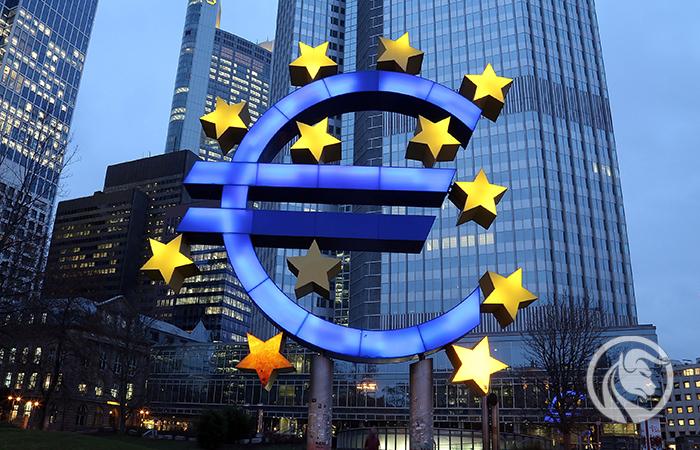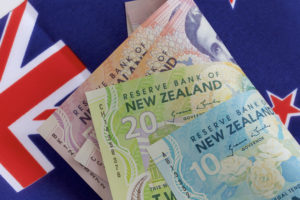European Central Bank (ECB) - responsible for the stability of the euro
The European Central Bank (ECB) is the central bank of the single currency of the European Union. Of course, talk about euro (EUR). This institution is responsible, among others, for the issue of the single currency. Its competences also include protection of its purchasing power, i.e. maintaining a stable price level. It is worth taking a closer look at her because her decisions have a significant impact not only on the exchange rate, but also on the overall monetary policy.
At the outset, it is worth adding that the ECB associates and assumes part of the tasks of central banks of countries such as: Austria, Belgium, Finland, France, Greece, Spain, the Netherlands, Ireland, Luxembourg, Germany, Portugal, Italy, Slovenia, Cyprus, Malta, Slovakia , Estonia, Latvia and Lithuania.
Be sure to read: Bank of England - guard of the British pound
A brief history of the ECB
1 was established on June 1998, when the nomination for the members of the ECB's Management Board came into effect. Only a few months later, namely the 1 January 1999 year, the Economic and Monetary Union was established, which brought together 11 countries. The first president of the European Central Bank was Dutchman Wim Duisenberg - former president of the European Monetary Institute and the Dutch central bank.
The foundations for the current ECB was EMI (European Monetary Institute). This institution began its operations 1 January 1994 year. The central banks of the Member States were also members of the European Monetary Institute. The EMI Council was independent and therefore it could not be influenced by any bodies forming the Community or, worse, by the governments and institutions of the Member States.
The EMI's preparatory work has helped to set up the ECB and has had an impact on subsequent landmark events, including the introduction of the euro as the 1 1999 January settlement currency and 1 January 2002 cash form. The European Monetary Institute, in accordance with the 117 Treaty on the European Community, was to strengthen cooperation between national banks central All these events shaped the current appearance and organizational structure of the ECB, which we will soon be moving to.
The functions and tasks of the ECB
The main objectives and tasks of the ECB are defined by appropriate regulations. The main objective of the European Central Bank is set out in art. 127 sec. 1 Treaty on the functioning of the European Union. There are certain main goals in it, including maintaining price stability in the euro area zone. By price stability, we mean a situation when inflation is below 2%. The ECB's side-objectives include: maintaining a stable financial system, supporting the banking system of the Member States and broadly supporting the general economic policy in the Community. The objectives set out above define the specific tasks that rest on the shoulders of the ECB. We are talking about a few key issues, which include:
- supporting the correct operation of payment systems,
- defining and implementing the monetary policy of the euro area,
- management of foreign reserves of euro area countries,
- managing currency operations,
- the right to authorize and approve the issue of euro banknotes,
- collecting statistical information from central banks,
- setting the interest rate for loans granted to commercial banks,
- impact on money supply.
Organization of the European Central Bank
- The Governing Council - the main decision-making body of the Euro-system. It is composed of the six members of the Executive Board and the governors of the Eurosystem's central banks. Additionally, it is supplemented with 19 other members. They are the governors of the central banks of the euro area countries. Meetings are organized min. 10 times a year. Monetary policy decisions are made on them (including, for example, reserve management)
- General Council - mainly advisory role. It is also responsible for the compilation of statistics, the compilation of the annual reports of the European Central Bank and the management of the terms and conditions of employment of ECB staff. It is the body that has responsibility for the proper functioning of the institution. It is a component of the ECB which connects the countries that are part of the Euro-system with those that are not part of the euro area. It is composed of the President of the ECB, the Vice-President of the ECB, together with all the governors of the national central banks of the EU countries.
- The Management Board consists of 6 persons: the President, the Vice President and 4 of other members. The main goal of the Board is the implementation and implementation of the monetary policy set by the Governing Council. They are elected for the 8-term term of office.






















![Forex Club – Tax 9 – Settle tax on a foreign broker [Download the Application] Forex Club - Tax 9](https://forexclub.pl/wp-content/uploads/2024/02/Forex-Club-Podatek-9-184x120.jpg?v=1709046278)
![Trading View platform – solutions tailored to the needs of traders [Review] trading view review](https://forexclub.pl/wp-content/uploads/2024/03/trading-view-recenzja-184x120.jpg?v=1709558918)
![How to connect your FP Markets account to the Trading View platform [Guide] fp markets trading view](https://forexclub.pl/wp-content/uploads/2024/02/fp-markets-trading-view-184x120.jpg?v=1708677291)
![How to invest in ChatGPT and AI? Stocks and ETFs [Guide] how to invest in chatgpt and artificial intelligence](https://forexclub.pl/wp-content/uploads/2023/02/jak-inwestowac-w-chatgpt-i-sztuczna-inteligencje-184x120.jpg?v=1676364263)


![Izabela Górecka – “Success on the market depends not only on knowledge, but also on emotional stability” [Interview] Izabela Górecka - interview](https://forexclub.pl/wp-content/uploads/2024/04/Izabela-Gorecka-wywiad-184x120.jpg?v=1713870578)
![WeWork – the anatomy of the collapse of a company valued at $47 billion [WeWork, part II] wework bankruptcy story](https://forexclub.pl/wp-content/uploads/2024/04/wework-bankructwo-historia-184x120.jpg?v=1711729561)
![Adam Neumann – the man who screwed up Softbank [WeWork, part AND] adam neumann wework](https://forexclub.pl/wp-content/uploads/2024/04/adam-neumann-wework-184x120.jpg?v=1711728724)





![How to transfer shares to another brokerage office [Procedure description] how to transfer shares to another brokerage house](https://forexclub.pl/wp-content/uploads/2024/03/jak-przeniesc-akcje-do-innego-biura-maklerskiego-184x120.jpg?v=1709556924)
![The most common mistakes of a beginner trader - Mr Yogi [VIDEO] Scalping - The most common mistakes of a beginner trader - VIDEO](https://forexclub.pl/wp-content/uploads/2024/03/Scalping-Najczestsze-bledy-poczatkujacego-tradera-VIDEO-184x120.jpg?v=1711601376)
![Learning patience: No position is also a position - Mr Yogi [VIDEO] Scalping - Learning patience - No position is also a position - VIDEO](https://forexclub.pl/wp-content/uploads/2024/03/Scalping-Nauka-cierpliwosci-Brak-pozycji-to-tez-pozycja-VIDEO-184x120.jpg?v=1710999249)
![When to exit a position and how to minimize losses - Mr Yogi [VIDEO] Scalping - When to exit a position and how to minimize losses - VIDEO](https://forexclub.pl/wp-content/uploads/2024/03/Scalping-Kiedy-wyjsc-z-pozycji-i-jak-minimalizowac-straty-VIDEO-184x120.jpg?v=1710336731)



















